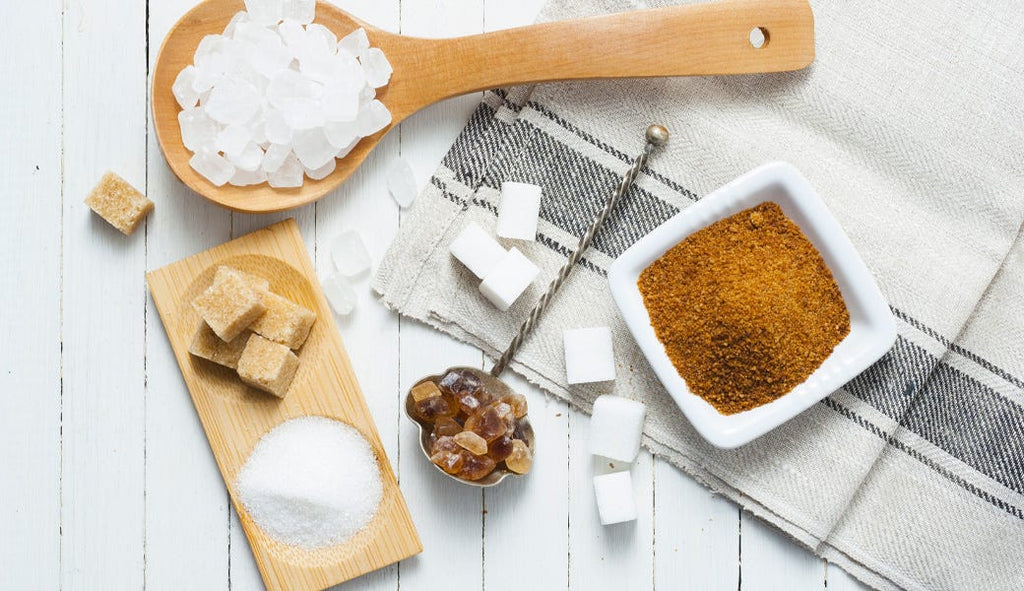Sugar — Hiding in Plain Sight
It seems that now-a-days sugar is added to nearly everything in the supermarket. Did you ever look at your ketchup label? There’s added sugar in there. How about that “healthy” salad dressing? Yup, it’s in there too. Your pasta sauce, low-fat yogurt, BBQ sauce, granola bars, breakfast cereal, soup, peanut butter? You guessed it, sugar is added to all of these foods, and many more.
It’s no wonder that sugar consumption has skyrocketed over that past few generations. In fact, the average American consumes the equivalent of over 23 teaspoons of added sugar per day. That’s despite the American Heart Association’s recommendation of limiting added sugar intake to no more that 6 teaspoons for women and 9 for men.
This is troubling when you consider that excessive sugar intake has been linked to an increased risk of numerous health issues affecting our metabolism, immune system, and brain.
The fact that added sugar is lurking in so many packaged foods and beverages can make it a real challenge for health-conscious people to know how much they’re actually consuming. For example, a large flavored coffee from certain coffee chains can contain up to 25 teaspoons of sugar!
HARD TO STOP
For those of us that want to reduce our sugar consumption, there’s an added complication. Namely, sugar increases our levels of dopamine, the “feel-good hormone” that is associated with feelings of euphoria, motivation, and concentration. Studies around the world have likened sugar’s addictive capabilities to that of cocaine in the way that it affects the reward pathways in the brain.
To make matters worse, sugar consumption triggers an insulin roller coaster that can make us crave it even more. Insulin is the hormone that allows our cells to absorb sugar (glucose) from the bloodstream. When we drink a flavored coffee or mega-sized soda, our blood sugar level spikes. Our pancreas then releases insulin to lower blood sugar levels to a normal range. When we eat too much sugar over a long period of time, however, our pancreas can start to overshoot the amount of insulin it releases. When this happens, we get a sharp sugar high, then a deep sugar crash, which results in low energy and feeling hangry. What do we want then? That's right. More sugar. If this roller-coaster goes on for too long, it can lead to more long-term, systemic consequences.
HOW TO MANAGE SUGAR INTAKE
There are no one-size-fits-all approaches to managing sugar intake since each person’s body and life circumstances are different. An athlete will have very different health goals and needs than a diabetic. But there are certain strategies that can help everyone reduce their sugar intake.
• Check labels on prepackaged foods to identify hidden sugars.
• Start the day with a breakfast high in protein & healthy fats instead of carbs.
• Don’t drink your sugar — avoid fruit juice, sports drinks, soda & flavored coffees.
• Eat regularly, either three meals a day and two healthy snacks or five small meals a day.
• Get enough sleep since when we’re exhausted we often crave sugar to boost energy.
• Make sure to include protein & healthy fats with each meal to control blood sugar levels.
• Drink water when you crave sugar. A 5% decrease in hydration leads to a 20% decrease in energy.
• Take a high quality multivitamin and mineral supplement, such as Multi•Vita•Min™ & Bone Renewal®, since nutrient deficiencies can cause or make cravings worse.










